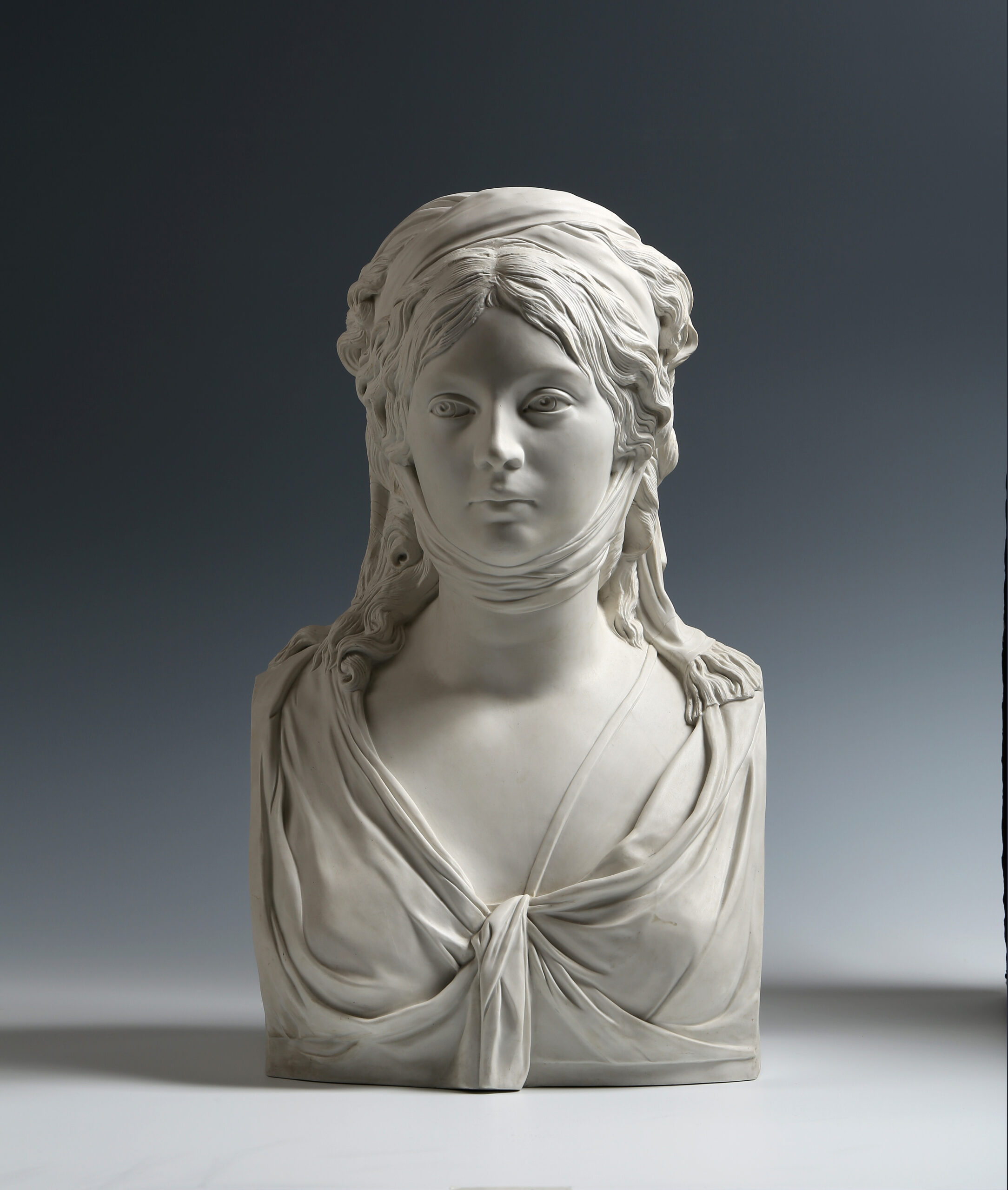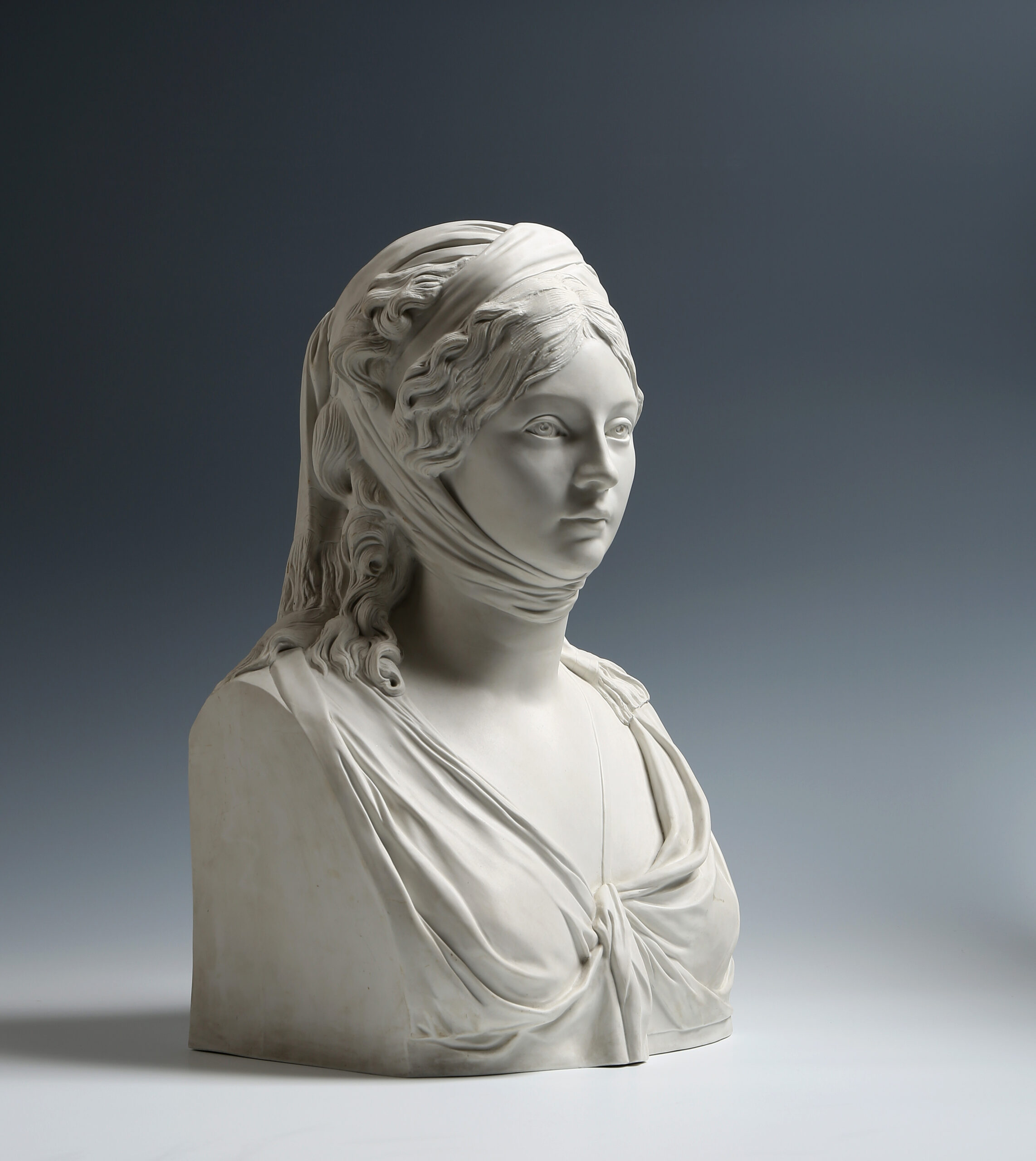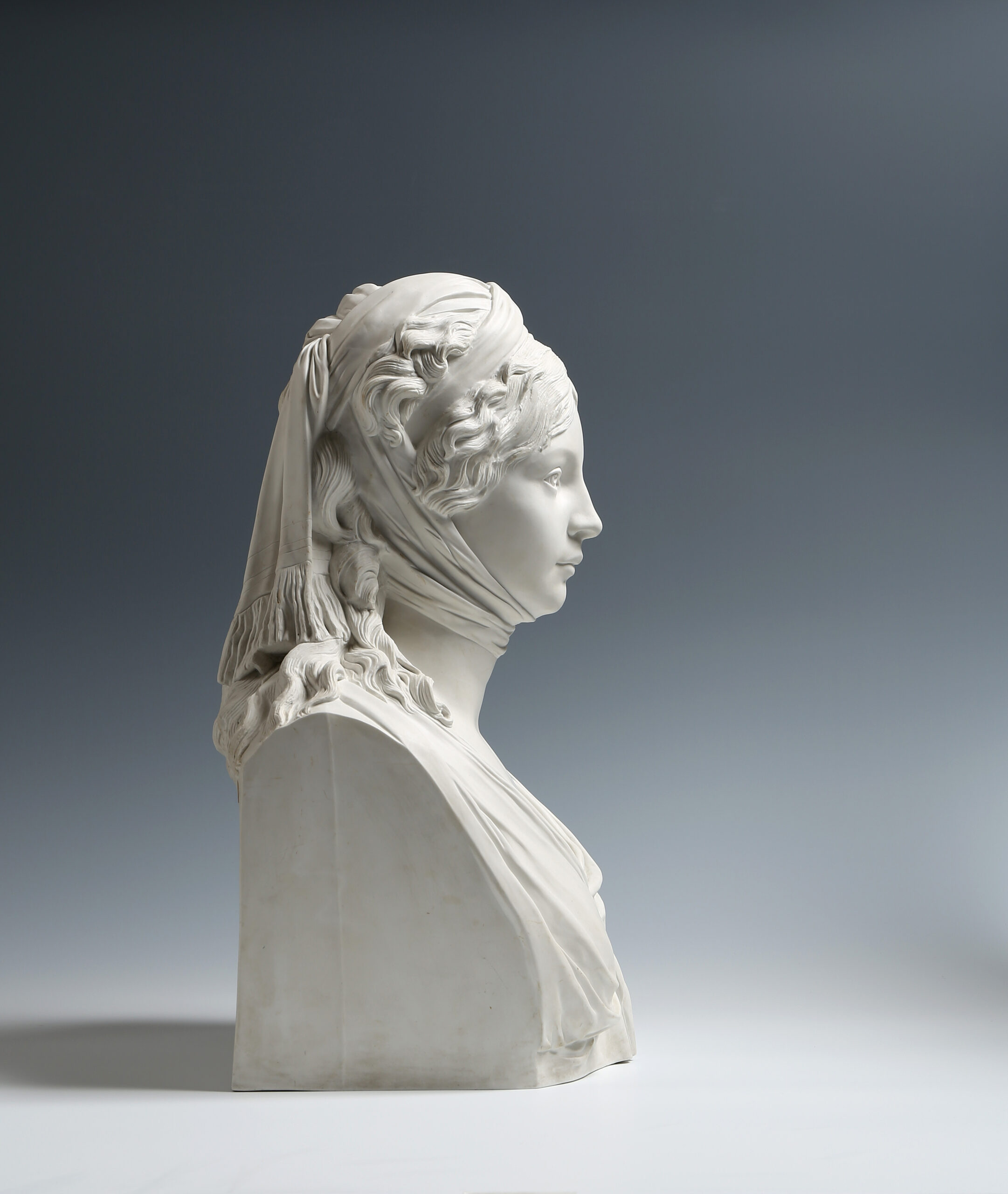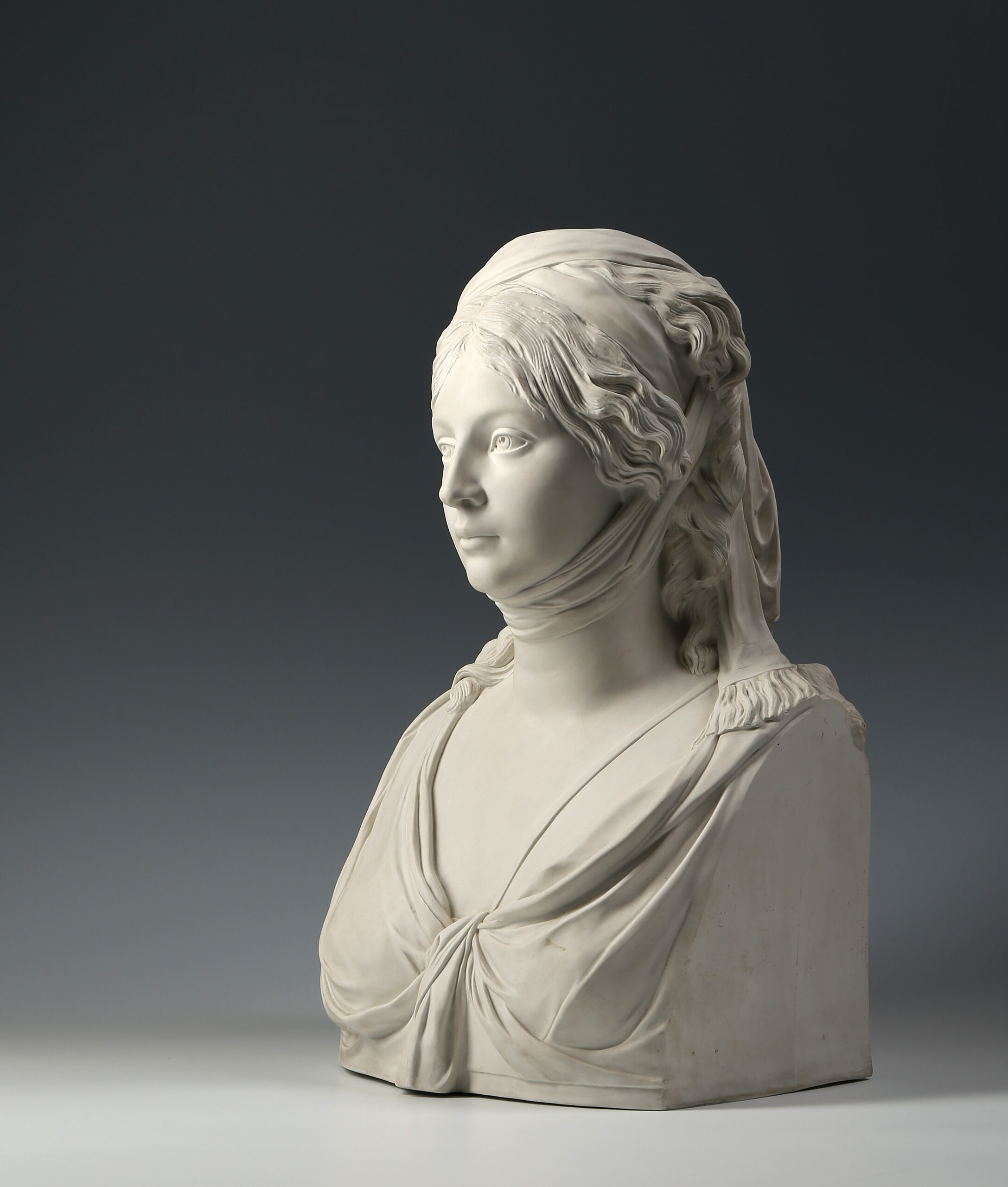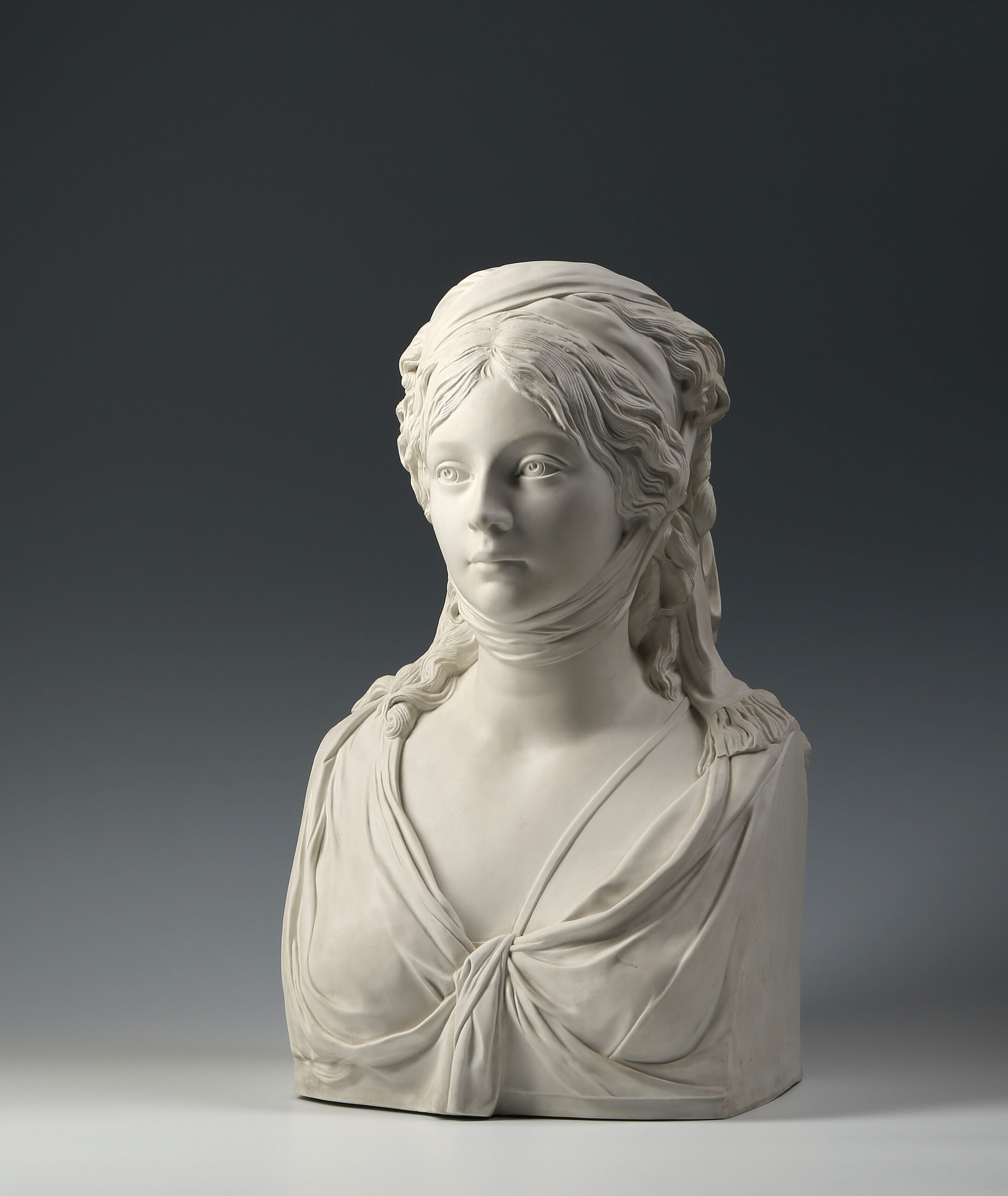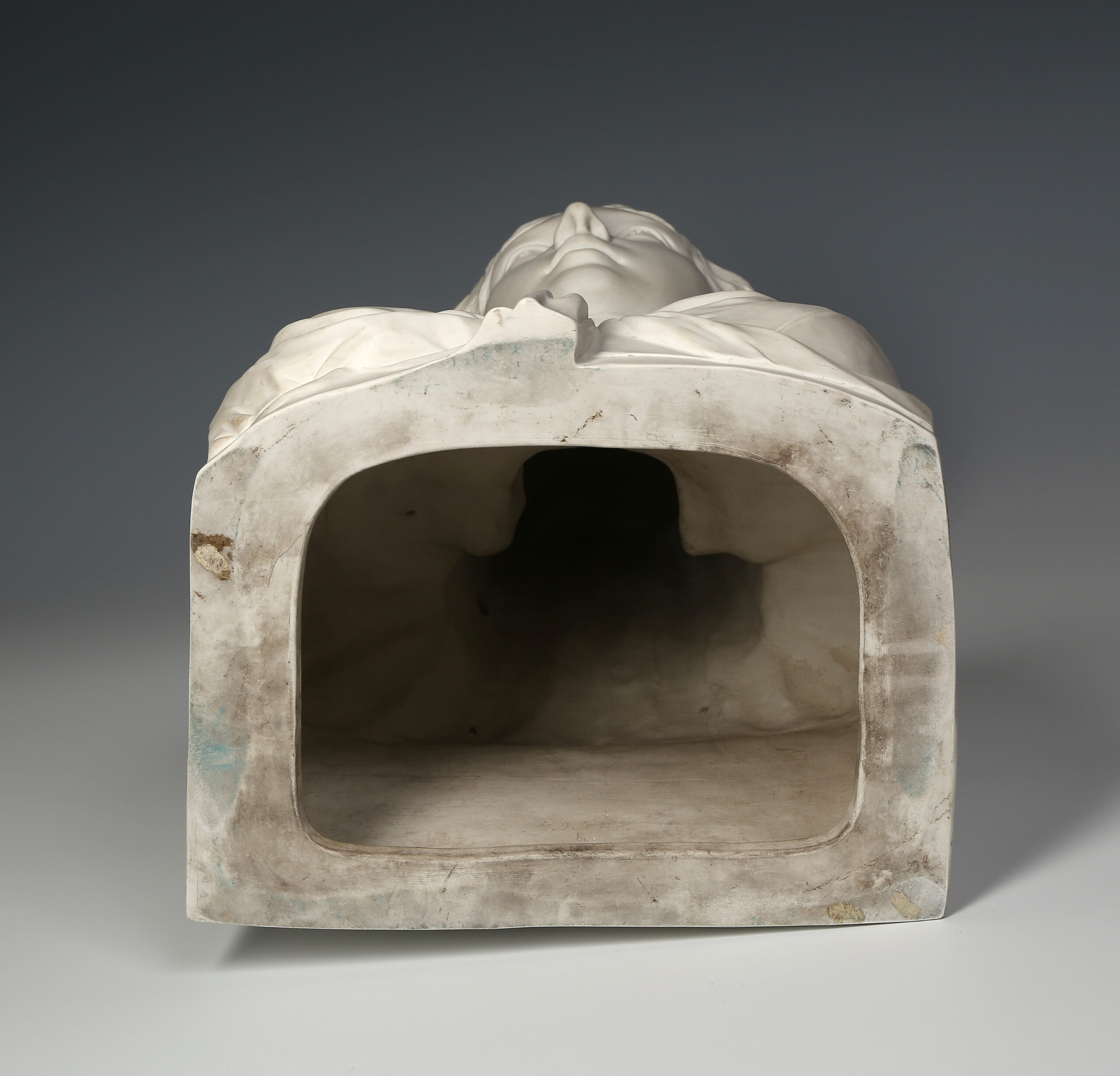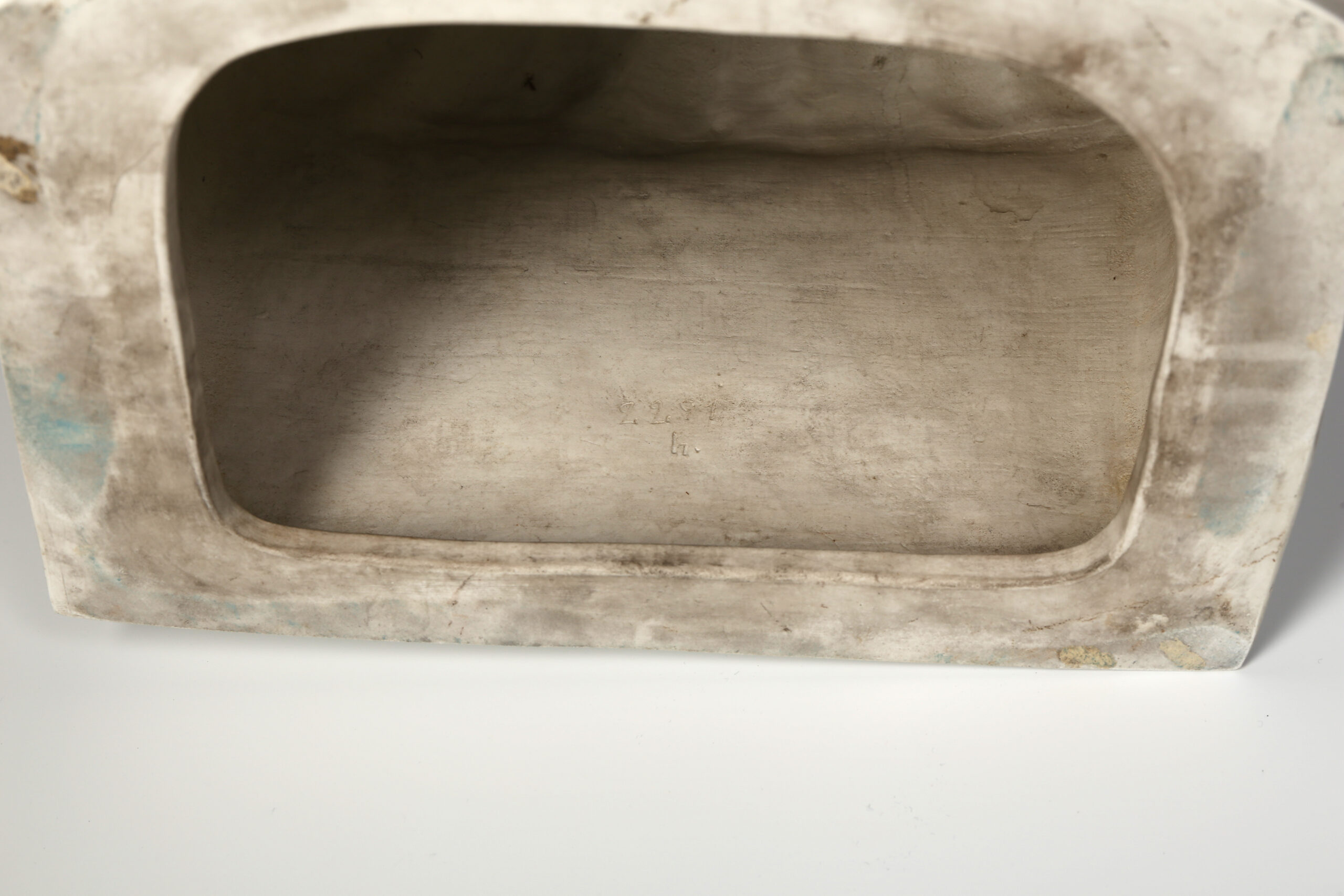
Luise of Mecklenburg-Strelitz (1776 – 1810) married Crown Prince Frederick of Prussia on the 24 December 1793. Her sister Friederike married his younger brother a few days later. When the sisters arrived in Berlin the ‘triumphal procession’ of the two princesses reached its zenith. Schadow reported “in 1794 a magic spell had taken effect in Berlin, extending through all estates, with the appearance of the aristocratic sisters [….]. Born in Mecklenburg but raised near the banks of the [River] Main, they had been blessed with the most pleasant of the German dialects, and those who also heard their voices in addition to enjoying the sight of their comeliness were delighted by these.”[1]
Baron Friedrich Anton Freiherr von Heinitz (1725-1802), a trustee of the Academy and head of the Königliche Porzellan-Manufaktur or KPM, played a key role in arranging the princesses’ sculptural portraits; he requested an initial sitting on Schadow’s behalf. According to Schadow’s autobiography, the Crown Prince was present at the sittings. It is known that the terracotta busts were completed sometime in the last week in July of 1795, as on 2 September 1795 Schadow stated that “five weeks ago, I completed the main images from life of Her Royal Highness the Crown Princess and her Royal sister”. The terracotta of Princess Friederike survives[2], that of Luise is lost.
The busts were exhibited in the Autumn exhibition of the Academy of Arts and on 11 November 1795, at the end exhibition, Schadow received 500 thalers from the Königliche Porzellan-Manufaktur for the plaster models of the double portrait and the two busts of the princesses[3].
Schadow had the busts cast in plaster by Johann Nicolaus Beyer, a skilled moulder employed in his workshop. The first versions were completed by 2 September 1795 at the latest, and Schadow recorded selling twenty-six examples of Princess Luise and twenty of her sister. Luise was also copied in papier-mâché by the Ludwigsluster Cartonfabrik in 1795/96[4].

The smaller Berlin version by Carl Friedrich Riese after Schadow
The Königliche Porzellan-Manufaktur produced a smaller scale version of 26 cm high on a circular socle by Carl Friedrich Riese based on the model of Johann Gottfried Schadow in 1798.
Two earlier large busts in biscuit porcelain are known, one in the Kunstgewerbemuseum in Berlin, (inv, no, Hz 646) and another in Schloss Charlottenburg, the former came from the Hohenzollern Schloss and the latter was presented to the King in April 1803. The Kunstgewerbemuseum example was in the recent exhibition in the Alte Nationalgalerie, Berlin, where it was dated (presumably incorrectly) to 1795[5]. These 1803 models are differently structured having a back of the original cut away. Our bust is much closer to Schadow’s original plaster even down to the mould lines on the side, the definition is sharper and more detailed and the hair at the back is also complete.
The plaster of Luise in the Berlin Akademie der Kűnste measures 59 x 35 x 25 cm. Our bust in biscuit porcelain is about 18% smaller, as one would expect from the normal shrinkage which occurs during the drying and firing of porcelain.
From the recent exhibition in the Alte Nationalgalerie, Berlin, from left to right:

Princess Friederike, terracotta, 1795. Crown Princess Luise of Prussia (1) plaster, 1795, (2) papier-mâché (tinted pink) Ludwigsluster Cartonfabrik 1795, (3) biscuit porcelain, KPM and (4) marble 1798/99.
We know of one other version of our bust which was acquired by The Stiftung Preußische Schlösser und Gärten Berlin-Brandenburg in 1964 (Skulpt.Slg 6011). The height is 48 cm and appears to be identical to ours bearing the same incised ‘Modell 2291’, this version was issued in 1874.

The marble Prinzessinnengruppe completed in 1797
The two portrait busts taken from life were used as the basis for Schadow’s great full-scale double portrait in plaster, which was presented at the Berlin Academy exhibition of 26 September 1795, the marble version was completed in 1797. Although it has now become the most beloved of all Berlin sculptures, Friedrich Wilhelm III, on becoming king, rejected a prominent place for the marble group, partly because his widowed sister-in-law Friederike had fallen out of favour because of an unsuitable liaison. It was hidden from public view until 1893[6] and relegated to an obscure part of the Berlin palace and seen by few until rediscovered and reassessed in the early 20th century, notably through the Centennial Exhibition of German Art in the Alte Nationalgalerie, Berlin, in 1906[7]. After the demolition of the City Palace in 1950 it was moved to the Alte Nationalgalerie where it remains.
The Prinzessinnengruppe has recently been the subject of an exhibition at the Alte Nationalgalerie in Berlin entitled ‘Johann Gottfried Schadow, Berührende Formen’[8].
Schadow had studied in Rome where he met Canova with whom he maintained a close artistic exchange. The Prussian minister von Heinitz, chairman of the Königliche Porzellan-Manufaktur, found a position for Schadow at the royal factory in 1787. This led to his collaboration with the factory and proved decisive for its development[9]. He was appointed Court Sculptor in 1788.
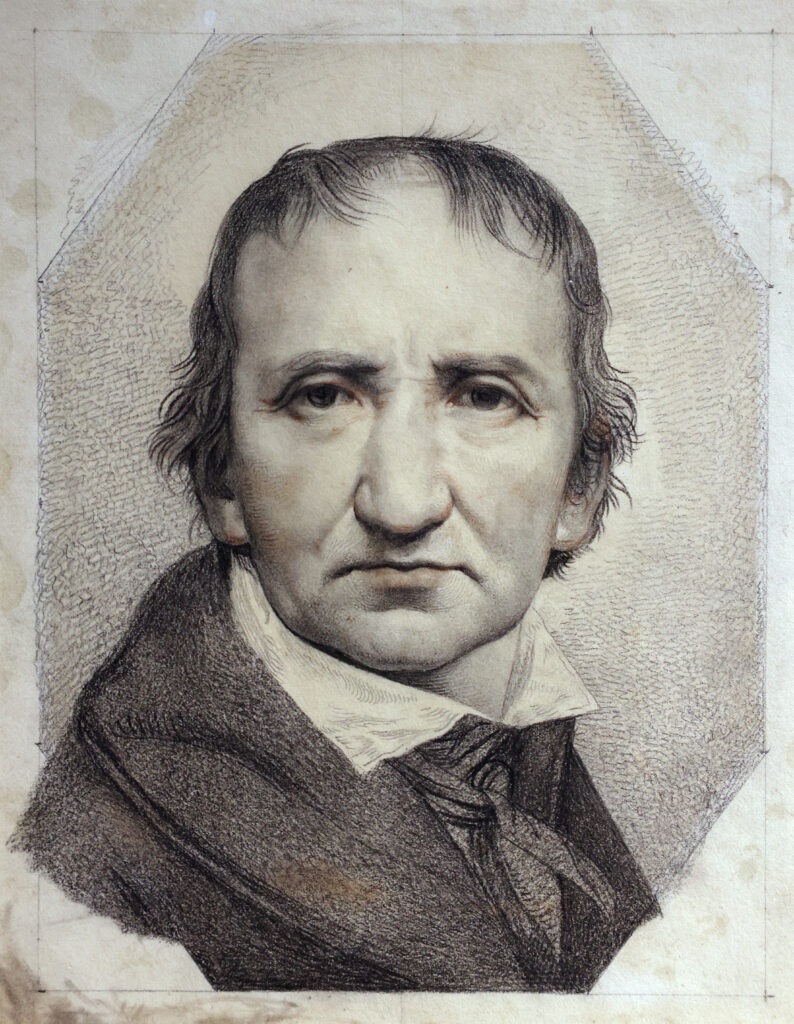
Johann Gottfried Schadow, self-portrait, before 1820 Berlin Kupferstichkabinett
According to Schadow, female busts were “one of the most difficult tasks in art”. The special difficulty consisted in “unifying likeness and gracefulness, encapsulating within a single moment the charm which life contains through the inspired motion and multifariousness of infinitely many moments”[10], this requires “a delicate sense of art” and “a spirit of observation, I would almost say, bordering on cunning”[11].
We are grateful to Dr Samuel Wittwer for considerable help with this entry.
Condition:
Good, no restoration
Provenance:
French private collection from a house in Saint Cloud, collected by the grandfather of the vendors. It might have been bought at Hotel Drouot in the 1920s or 30s.
Sold Audap & Associés, Hôtel Drouot, Paris, 6 April 2023, lot 199
References:
Deseyve & Guericke 2022
Yvette Deseyve (Ed.) with Sintje Guericke, Johann Gottfried Schadow, Embracing Forms, Exh. cat. Nationalgalerie, Staatliche Museen zu Berlin, (Hirmer 2022, English edition)
Heim 2016
Dorothee Heim, Die Berliner Porzellanplastik und ihre skulpturale Dimension 1751–1825, Der Sammlungsbestand des Kunstgewerbemuseums, Staatliche Museen zu Berlin, 2016
Krenzlin 1990
Ulrike Krenzlin, Johann Gottfried Schadow, (Deutsche Verlags-Anstalt, 1990)
Price: £45,000

[1] Deseyve & Guericke 2022, p. 79.
[2] Alte Nationalgalerie, Inv. No. B II 75 (CR 37).
[3] Krenzlin 1990, p. 139, and Deseyve & Guericke 2022, p. 86, footnote 2.
[4] An example in papier-mâché survives in Potsdam, Stiftung Preuẞische Schlösser und Gärten Berlin-Brandenburg, Inv. No. Skulpt.slg. 1062, GK III 4808.
[5] Deseyve & Guericke 2022, p. 182 fig cat 30.
[6] Krenzlin 1990, p. 141.
[7] Deseyve & Guericke 2022, p. 200.
[8] The exhibition ran from October 2022 to February 2023.
[9] Deseyve & Guericke 2022, p. 49.
[10] Deseyve & Guericke 2022, p. 42.
[11] Krenzlin 1990, p. 139.

